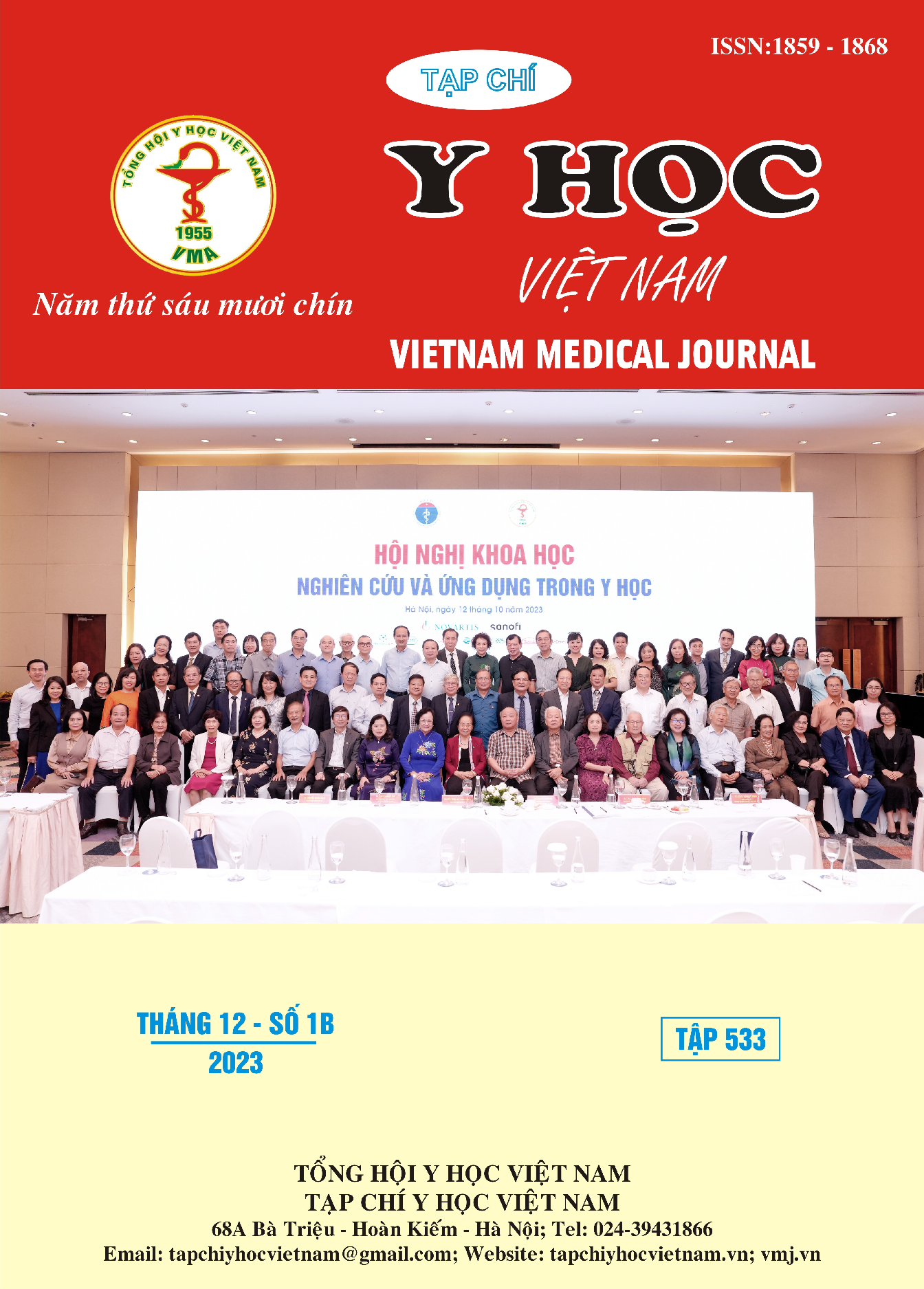THE CHARACTERISTICS OF THE AXILLARY LYMPH NODE METASTASIS IN INVASIVE LOBULAR BREAST CARCINOMA
Main Article Content
Abstract
This report aims to assess the rate of lymph node metastasis and the correlation between lymph node metastasis and some risk factors in invasive lobular breast carcinoma. A descriptive cross-sectional study was conducted on 98 patients with invasive lobular breast carcinoma at the Department of Pathology - Cytology, National Cancer Hospital from January 2019 to April 2023. The study results show that the rate of lymph node metastasis was 48,0%. The factors associated with the increased risk of lymph node metastasis were large tumor size, high tumor grade, the presence of lymphovascular invasion, ER expression, some molecular subtypes (triple-negative breast cancer, luminal B-like breast cancer, and HER2-enriched breast cancer) (p < 0,05). The results of this study hope to aid patient selection for axillary lymph node dissection and improve patient counseling.
Article Details
Keywords
lymph node metastasis, risk factors, invasive lobular breast carcinoma
References
2. Yılmaz, Trabzonlu, Güler et al. Characteristics of Special Type Breast Tumors in Our Center. European Journal of Breast Health. 2018;14(1):17-22
3. Fernández B, Paish EC, Green AR, et al. Lymph-node metastases in invasive lobular carcinoma are different from those in ductal carcinoma of the breast. J Clin Pathol. 2011;64(11): 995-1000. doi: 10.1136/ jclinpath-2011-200151
4. Viale G, Zurrida S et al, Predicting the status of axillary sentinel lymph nodes in 4351 patients with invasive breast carcinoma treated in a single institution. Cancer. 2005;103(3):492-500. doi:10.1002/cncr.20809
5. Tan LGL, Tan YY, Heng D, Chan MY. Predictors of axillary lymph node metastases in women with early breast cancer in Singapore. Singapore Med J. 2005;46(12):693. doi:10.1016/s0959-8049(98)80134-2
6. Barth A, Craig PH, Silverstein MJ. Predictors of axillary lymph node metastases in patients with T1 breast carcinoma. Cancer. 1997;79(10):1918-1922. https://doi.org/10.1002/(SICI)1097-0142 (19970515)79:10<1918::AID-CNCR12>3.0. CO;2-Y
7. Makki J. Diversity of Breast Carcinoma: Histological Subtypes and Clinical Relevance. Clinical Medicine Insights: Pathology. 2015;8:23-31. doi:10.4137/cpath.s31563


